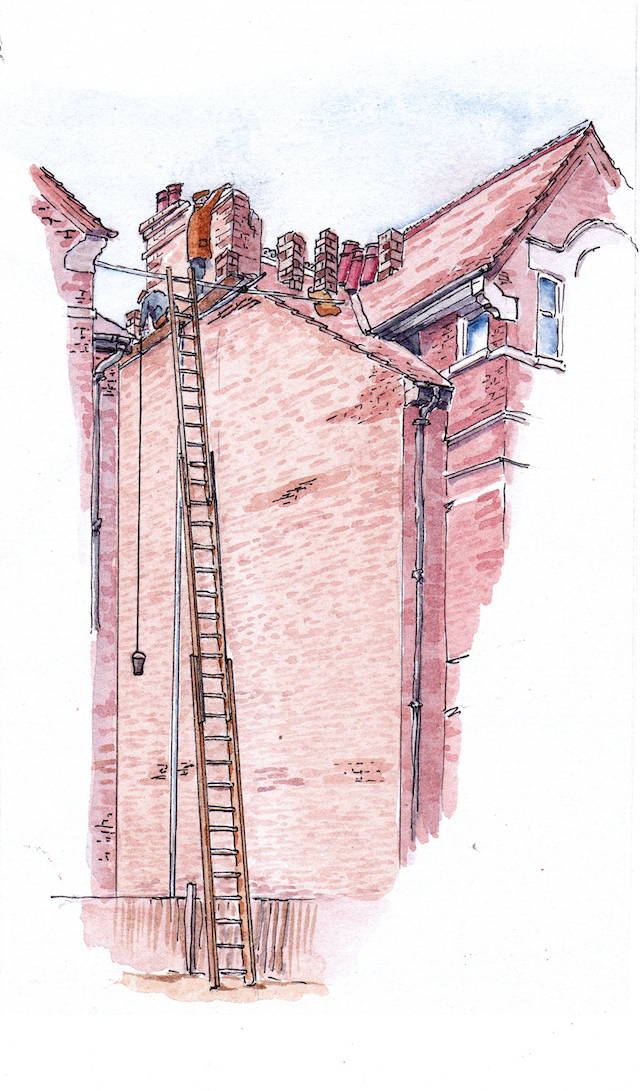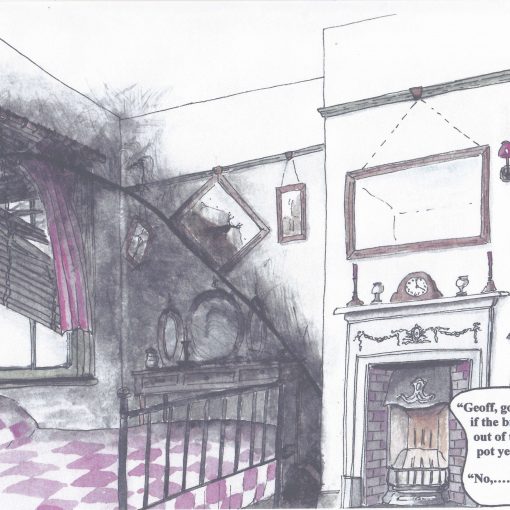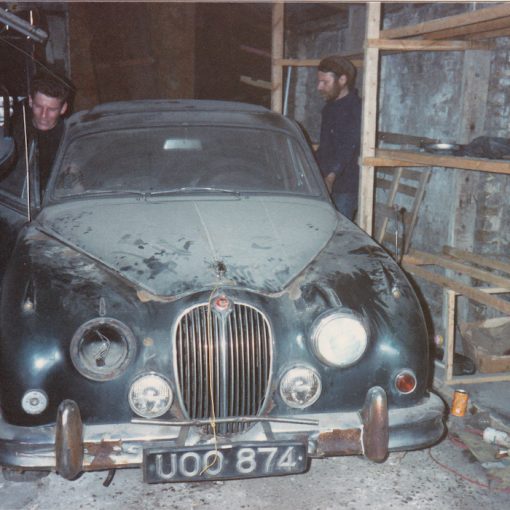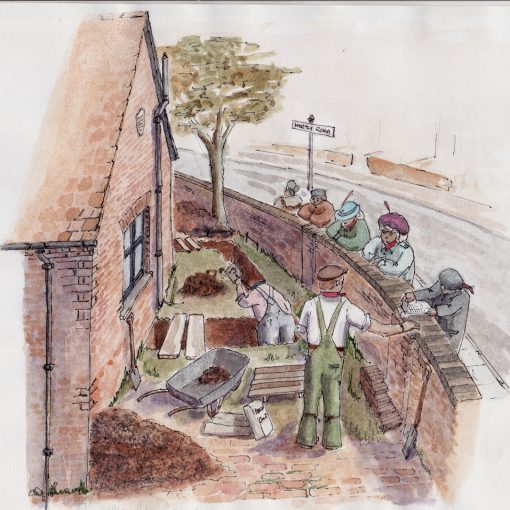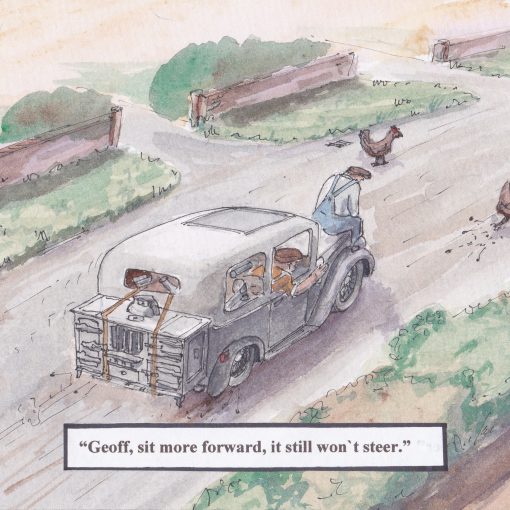This story was told to me by my Uncle Geoff Cooper, one of a series from my family’s local building and decorating firm W.J.Cooper & Son.
“Just after the war when my Dad, your Granddad, was still running the firm, Harold Morris and I had to go down to Manor Road in Westcliff—we had our own truck you know—to rebuild a chimney stack.
The firm then owned six steel scaffold poles, a little tiny sack full of scaffold fittings and one 13 ft scaffold board.
The house on which we had to repair the stack was one of a pair, with about a ten-foot gap between the two houses.
With the Long Tom triple ladder fully out, we could just reach the roof. We placed sacks of straw on the roof and placed two poles across the gap between the two houses. Two more poles were clamped at right angles to the first two poles, called ledgers, plus the last two poles as upright standards to give the scaffold some rigidity. Then we placed the scaffold board on the poles and extended Long Tom to its fullest extent, so that it just reached the scaffold board ready to start work.
Once we were on the scaffold board, both Harold and I looked up at this eight-pot stack and wondered how we were going to do the job from one board. With safety in mind, I drove two 4-inch nails through the board to stop it sliding backwards and forwards on the poles.
Feeling a lot safer, we started dismantling the stack. It became obvious as the board started to bend, that we couldn’t put all the bricks on the board, so Harold and I had the idea of taking off a few roof tiles and stacking the bricks and the 4 ft cannon head pots on the now exposed tile battens. By adopting this safer method of demolition, we managed to remove enough unstable brickwork to contemplate rebuilding the stack although the whole roof seemed to be covered with small piles of twenty or so bricks and the eight salvaged pots.
We were professionals; we had a proper 3 ft by 3 ft mortar board, so we had to make extra room on our scaffold board to accommodate this.
We managed to rebuild the stack, and without needing any extra bricks, using up the flue dividing bricks to make up the shortfall.
We took two days to rebuild that stack and I think we got a fiver for it. All off that one board.
When we had finished, your Grandad said: ‘Two days, two days; what am I going to be able to charge for that? Still perhaps you could have done with a boy.’”
Hearing my Uncle’s story, I observed that it sounded pretty dangerous and would never pass a risk assessment today. “Risk assessment, what’s risk assessment, then, boy?” said Geoff. “When I look back on my life, son…it’s a wonder that I’m still here.”
Colin Cooper

